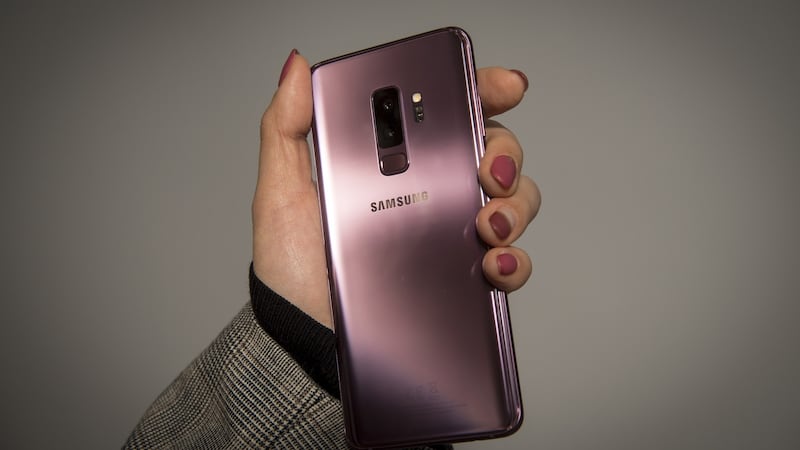Looking at the Samsung Galaxy S9+, you would find it difficult to tell it apart from its predecessor. It looks for all intents and purposes to be the same phone, but there are some subtle differences that a little bit of digging reveal.
The first is that despite having the same size screen at 6.2in the S9+ is a fraction shorter than its predecessor. Samsung has shaved off bezels at the top and bottom of the screen, giving that infinity display it is so proud of a little more screen to handset ratio. It’s a fraction of a millimetre thicker and wider too, and 16g heavier, but it’s not something you’d immediately notice.
One of the best improvements to the design is the placement of the fingerprint sensor. It has has been moved from its rather awkward position on the S8+ beside the camera lens to right underneath it. Now you don’t have to feel around for it, it’s right where your hand will find itself positioned, and comfortably so.
However, I rarely used the fingerprint sensor because the Intelligent Scan is far more convenient for gaining access to your phone. Instead of a simple iris scan or facial recognition, which Samsung has offered separately in the past on its devices, Intelligent Scan combines both. It worked 95 per cent of the time I tried it, with only a few failures.

The camera is the star of the show on the S9+. Samsung has refined the rear camera on both the S9 and the S9+, but the latter got the better deal. Both have a 12 megapixel resolution, but the S9+ gets a dual camera that is pulled from the Note 8 and refined even further. The aperture has been widened to f1.5, which means in low light, you get better images with less noise, and it has a dual aperature of f2.4 , which is designed to prevent overexposure of the images. Tests revealed better colour reproduction in low light too, giving more natural looking images. But occasionally, you sacrifice a degree of texture. The second camera, the telephoto, has an aperture of f2.4.
The camera has a few extras built in. Bixby Vision serves a few purposes: it will identify objects in the photo frame so you can search for similar things online – this one was hit and miss – or translate text simply by pointing the camera lens at a menu or sign. You need an internet connection for all this to work, so depending on where you are travelling, costs may dictate the use of this one.
The introduction of a super slow-mo mode may be of interest for video fans. The camera will shoot at 960 frames per second in 720p resolution and you can set an area of the frame that triggers the slow motion shooting when an object enters it.
The front-facing camera has a new selfie focus mode, which targets the subject and gives some background blur and brings back the wide-selfie mode from the S8+.
The iPhone X had animoji, the S9 and S9+ has AR Emoji. Essentially, it’s you in emoji form. You take a selfie, choose some basics like hair colour and hair style, put it into some clothes and the phone creates GIFs starring you. The idea is that it’s a more personal form of emoji, but it’s really just a gimmick that is interesting for a few minutes and then you never use again.
All this is great but ultimately useless if Samsung doesn’t have the battery to keep the lights on, so to speak. The battery in the S9+ is a 3500 mAh battery, which officially gets you just over a day of talk time, or several days of video playback, and over half a day of web browsing. In real world terms, you should not have to charge this twice a day.
The good:
Once again, Samsung is knocking it out of the park on screen and camera quality. The AR Emoji is a gimmick, but the super slow-mo mode is useful and the camera quality in low light is the best I’ve seen yet, although the loss of texture at times is a little unsettling. Samsung has also added stereo speakers, which gets the thumbs up.
The not so good:
If you are the type of phone owner who likes everyone to know that they have the latest phone, your only option here is to go for the new lilac colour.
The design may have improved for the fingerprint sensor, but the Bixby button is still often hit instead of the volume down button. And that beautiful metal and glass case the S9+ sports is a fingerprint magnet, so it’s a good thing you’ll be investing in a case to stop any expensive mishaps.
The rest:
There’s a secure folder that allows you to place copies of apps and files you want to keep hidden from view. You can lock it down with a Pin, pattern and biometrics, making sure that everything stays safely tucked away.
The verdict:
Samsung has refined an already great phone. If you skipped the S8+, this may be the Galaxy phone to go for, if you don’t mind paying for the privilege.

















